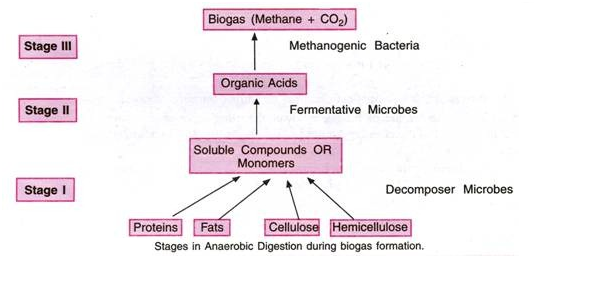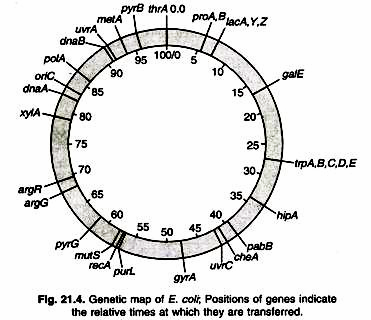ADVERTISEMENTS:
Here is a term paper on the ‘Transport in Human Beings’ for class 9, 10, 11 and 12. Find paragraphs, long and short term papers on the ‘Transport in Human Beings’ especially written for school and college students.
Transport in Human Beings
Term Paper Contents:
- Term Paper on the Meaning of Transport System
- Term Paper on Dual Circulation
- Term Paper on the Main Blood Vessels of the Body
- Term Paper on Heart and Its Functions
- Term Paper on the Comparison of the Three Types of Blood Vessel
- Term Paper on Blood: Features and Functions of the Main Components
- Term Paper on How Substances in the Capillaries Reach the Cells of the Body?
ADVERTISEMENTS:
Term Paper # 1. Meaning of Transport System:
ADVERTISEMENTS:
The term ‘transport system’, in humans, refers to the circulatory system. Like the transport system in flowering plants, it is made up of a system of tubes. Unlike flowering plants, there is a pump and a system of valves to ensure that the liquid (blood) within the tubes flows through them in only one direction.
Term Paper #
2. Dual Circulation:
During one complete circulation of the human (mammalian) body, blood travels twice through the heart:
ADVERTISEMENTS:
1. Blood arrives at the heart from the other organs of the body, and then travels to the lungs.
2. From the lungs, blood travels back to the heart, then to the other organs of the body.
As shown above, the heart is completely divided into two halves so it can play its part in the dual circulation.
Blood needs to travel only a short distance from the heart to reach the lungs, which lie either side of the heart. Blood has to travel much further to reach other parts of the body, such as the toes. Blood leaving the heart in the lesser circulation (to the lungs) is not therefore under as much pressure as it is in the greater circulation. (Blood must always be able to reach the tissues of the fingertips, even when the arms are raised.)
Term Paper #
3. The Main Blood Vessels of the Body:
Blood always leaves the heart in arteries. These vessels have thick muscular walls, and can withstand the high pressure of the blood. A large artery is called an aorta; a small one is called an arteriole.
Blood returns to the heart, under much lower pressure, in thinner-walled vessels called veins. A large vein is a vena cava; a small one is a venule.
Blood passes from arterioles to venules through microscopic blood vessels called capillaries.
ADVERTISEMENTS:
Figure 35 shows the names of the blood vessels associated with some of the main organs of the body.
Term Paper #
4. The Heart and Its Functions:
Important Facts about the Heart:
ADVERTISEMENTS:
(i) It is a muscular pump.
(ii) It is made of special muscle (cardiac muscle) which has the ability to contract rhythmically (even without stimulation).
(iii) It never tires or suffers from cramp.
(iv) It beats about 70 times per minute in the average adult at rest.
ADVERTISEMENTS:
(v) It has four chambers, all with similar volumes when full – two atria ‘on top’ (in mammals which walk upright) of two ventricles.
(vi) Atria (singular: ‘atrium’) have thin walls and receive the blood.
(vii) Ventricles have thick muscular walls to pump the blood out of the heart under pressure. The left ventricle has the thickest walls, to send blood round the body.
(viii) A system of valves ensures one-way flow of blood through the heart (see Fig. 36).
ADVERTISEMENTS:
(ix) A wave of contraction (called systole) passes over the heart from atria to ventricles. It forces blood from the atria into the ventricles, then forces blood out of the ventricles. As the ventricles contract, the mitral and tricuspid valves are slammed shut causing the ‘lubb’ sound of the heartbeat.
(x) The heart muscle then relaxes (diastole). As the ventricles relax, the semi-lunar valves close to stop blood being drawn back into the ventricles. The closing of the valves causes the ‘dupp’ sound. There is then a pause before the next cycle of systole-diastole (or ‘lubb-dupp’ of the heart).
Each beat of the heart creates a surge of pressure in the arteries, called the pulse.
There is no such surge in the veins, where blood flows smoothly under much lower pressure. Veins, however, have semi-lunar valves which ensure that blood continues to flow back towards the heart. Otherwise, veins rely on the movement of nearby muscles (e.g. the calf muscles of the leg) to ‘massage’ the blood from one set of semi-lunar valves to the next.
Term Paper #
5. A Comparison of the Three Types of Blood Vessel:
The pulse beat in an artery can be located by gently pressing on the wrist at the base of the thumb using your middle and index fingers.
The pulse is usually expressed as the number of heart beats per minute. One easy method of measuring pulse rate is to count the number of beats in a short period of time – say 15 seconds – then calculate the rate per minute.
Experiment 1:
To Show the Effect of Physical Activity on Pulse Rate:
Method:
ADVERTISEMENTS:
The number of pulse beats per minute is counted in a person at rest. This is done three times, and each result is recorded. The average number of pulse beats per minute is calculated.
About five minutes of exercise is performed (e.g. running, or stepping on and off a stair step).
The number of pulse beats in 10 seconds is counted and recorded. After 20 seconds, the number of beats is again counted over a 10-second period.
The process is continued for 10 minutes.
Each recorded number is multiplied by 6 to obtain the rate per minute.
The results can be used to draw a graph to show how the rate of heartbeat gradually returns to normal after exercise. The fitter the subject, the quicker the pulse rate returns to normal.
Heart Disease:
Diet is important for a healthy heart but, like all muscles, the heart benefits from exercise.
The harmful effects of atheroma on the coronary artery. The heart may also be affected by cigarette smoking. Carbon monoxide in cigarette smoke encourages the build-up of atheroma, and nicotine increases the tendency for blood to clot. The coronary artery may therefore not supply enough blood to the heart muscle.
People who lead stressful lives are also at risk of heart disease. Stress causes the release of raised levels of the hormone adrenaline, which constricts artery walls. In this way, stress adds to existing problems of partially blocked arteries.
To Decrease the Risk of Heart Disease:
(i) Restrict the intake of animal fats and cholesterol
(ii) Avoid obesity
(iii) Do not smoke
(iv) Settle for a less stressful lifestyle
(v) Take regular exercise.
Term Paper #
6. Blood: Features and Functions of the Main Components:
1. Red Blood Cells (RBCs):
Structure:
(i) Biconcave discs.
(ii) Extremely small (2 µm × 7 µm) (1 µm = 1/1000 mm).
(iii) No nucleus.
(iv) Live for only 120 days.
(v) Made in the bone marrow.
(vi) Destroyed in the liver.
(vii) Cytoplasm contains the red iron-containing protein called haemoglobin.
(viii) Flexible, so they can pass through the very narrow capillaries.
(ix) There are 4,000,000-5,000,000 RBCs per mm3 of blood.
Their microscopic size, biconcave shape and very large numbers provide an enormous surface area for the function given below:
Function:
The uptake and carriage of oxygen, by the haemoglobin in the form of oxyhaemoglobin.
2. White Blood Cells:
There are two types of white blood cells:
A. Phagocytes
B. Lymphocytes.
A. Phagocytes:
Structure:
(i) About 10 µm in diameter.
(ii) A lobed nucleus.
(iii) Made in the bone marrow.
(iv) Capable of movement (‘amoeboid’ movement), and can squeeze out of capillaries.
(v) There are about 5,000 per mm3 of blood.
Function:
They carry out phagocytosis. That is, they ingest potentially harmful bacteria, to prevent or overcome infection.
B. Lymphocytes:
Structure:
(i) About 10 µm in diameter.
(ii) A large round nucleus occupying almost all of the cell.
(iii) Made in lymph nodes.
(iv) There are about 2,000 per mm3 of blood.
Function:
They produce antibodies which ‘stick’ to bacteria and clump them together ready for being ingested by phagocytes. Some antibodies are in the form of antitoxins. Antitoxins neutralise poisons (toxins) in the blood which have been released by invading bacteria.
Antibodies are specific to the organism against which they are produced. They may stay in the blood only for a few weeks, or for a lifetime. If they stay for a lifetime, they give life-long immunity against the effects of that particular disease-causing agent (or pathogen).
Tissue Rejection:
Our immune system is unable to distinguish between possibly harmful protein (e.g. a pathogenic bacterium) and potentially useful ‘foreign’ protein (e.g. a transplanted heart or kidney).
There is always a danger of tissue rejection when a transplant operation is carried out. There is less chance of rejection if the protein structure in the transplanted organ is similar to the proteins of the recipient. Organs from a (close) relative are far less likely to be rejected because the protein types are similar.
3. Platelets:
Structure:
(i) Fragments of cells.
(ii) Made in bone marrow.
(iii) There are 250,000 per mm3 of blood.
Function:
Platelets play a part in blood clotting and help to block holes in damaged capillary walls.
4. Plasma:
Structure:
(i) Pale yellow watery fluid.
(ii) Contains the following materials in solution:
a. Digested foods (amino acids, glucose)
b. Vitamins
c. Ions (salts)
d. Excretory materials (urea, carbon dioxide)
e. Hormones
f. Plasma (or ‘blood’) proteins (e.g. antibodies and fibrinogen) and also:
i. Fat droplets (in suspension)
ii. Heat
iii. Red and white blood cells and platelets.
Function:
The plasma carries all materials from where they are absorbed or produced to the parts of the body where they are needed or excreted. For example, plasma carries carbon dioxide from the cells of the body to the lungs.
Fibrinogen is a soluble protein. When it comes in contact with enzymes released by damaged cells, it is converted into an insoluble, stringy protein called fibrin. This forms a mesh which traps blood cells and becomes a clot- preventing the entry of bacteria. The clot dries and hardens to form a scab, which covers the wound until the skin beneath has repaired.
Term Paper #
7. How Substances in the Capillaries Reach the Cells of the Body?
Capillaries leak, so some – but not all – of the materials in plasma can escape. All blood cells, except phagocytes, are too large to leave the capillaries. By their own effort, phagocytes are able to squeeze out between the cells in the capillary walls. Most plasma protein molecules are too large to pass out of the capillaries. All the smaller molecules in solution pass out to bathe the cells in tissue fluid (fig. 37).
Tissue fluid = blood without red blood cells, plasma proteins and some white blood cells.









